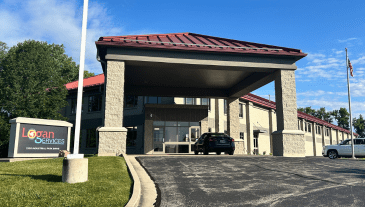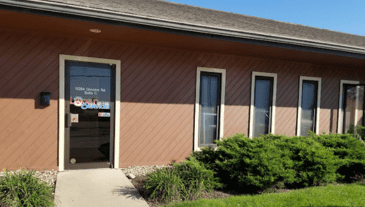Choosing new heating and cooling equipment for your home is an important decision that can impact your comfort and utility bills for years to come. With so many technical specifications to consider when comparing air conditioners and heat pumps, it’s easy to feel overwhelmed. Terms like “SEER rating” and “HSPF” get thrown around that may not mean much to the average homeowner.
That’s why it pays to do some research before making this major purchase for one of the biggest appliances in your home. Taking the time to understand efficiency ratings like SEER and SEER2 will ensure the system you select offers the best performance and energy savings possible.
Out of all of the metrics used to rate residential HVAC systems, SEER (Seasonal Energy Efficiency Ratio) is probably the most common. It provides a valuable but incomplete picture when comparing units. SEER only reflects peak efficiency at full load conditions. The problem is, air conditioners rarely run at 100% capacity. Your system may spend 80-90% of operating hours at partial load.
This is where SEER2 comes in. SEER2 provides a more accurate measure of real-world efficiency across varying loads. It indicates how well the equipment can maintain performance when conditions demand 50, 75, or 80% of the unit’s capacity. Top manufacturers like Trane and Mitsubishi calculate SEER2 ratings that let homeowners see a unit’s part load efficiency.
Understanding the difference between SEER and SEER2 is critical to choosing cooling equipment that maximizes energy savings. With the cost of running your air conditioner making up a huge chunk of your summer power bills, efficiency really does equal savings. As a concept, SEER2 might seem complicated at first glance. But looking past the jargon, it represents an easy way to compare how HVAC systems will operate in your home most of the time.
Understanding the Key Differences Between SEER and SEER2 Ratings
SEER, which stands for Seasonal Energy Efficiency Ratio, is the standard metric used by HVAC manufacturers to rate the peak cooling efficiency of air conditioning units and heat pumps. It measures the ratio of cooling output in BTUs to the amount of electricity consumed in watts at 100% rated capacity.
So, for example, a SEER 20 central air conditioner provides the same amount of cooling BTUs as a SEER 13 air conditioning system, but at substantially less electric consumption (1800 watts versus 2770 watts !!). A higher SEER indicates more efficiency when an AC system is taxed to its full capability on extremely hot days.
SEER ratings provide valuable information to compare efficiency between different equipment options. However, they only reveal part of the story. The issue is that SEER only evaluates performance at one point – full load conditions. In the real world, air conditioners rarely operate at 100% capacity.
This is where SEER2 comes into play. SEER2 is an additional efficiency measurement promoted by some leading AC manufacturers like Logan Heating & Air. While not yet an industry-wide standard, SEER2 aims to better represent real-world efficiency.
Unlike SEER, SEER2 testing involves operating air conditioners at partial loads of 100%, 75%, 50%, and 25% of the unit’s rated maximum capacity. It provides an efficiency profile across the most common operating ranges. The SEER2 rating is calculated by averaging the efficiencies measured at each of these load points.
The benefit of SEER2 is it indicates how well an AC system can maintain efficiency when conditions require less than full capacity. Since an air conditioner often runs at 50-80% of its peak on typical hot days, SEER2 offers a much more accurate estimate of energy savings during average use.
Why SEER2 Ratings Translate to Real Energy and Cost Savings
Air conditioning systems rarely operate at full load for extended periods. Factors like outdoor temperature, indoor set point, humidity levels, and your home’s insulation impact the cooling load needed to maintain comfort.
On a mild 80-degree day for example, your AC may only need to run at 50-75% of its total output to keep your house at 72 degrees. Only on the hottest summer days will it require max load for hours at a time.
This is why SEER2 matters – it indicates performance across the most common operating range, not just peak capacity like SEER. Air conditioners with a high SEER but lower SEER2 can lose efficiency rapidly at partial loads.
Equipment with a top SEER2 rating maintains performance even when conditions require 50-80% of total output. This directly translates into energy and cost savings in the real world. SEER2 tax credits can also help to make this a wise financial decision.
When you consider AC units run at partial load most of the time, SEER2 gives homeowners the data they need to choose equipment that maximizes energy efficiency and savings.
The Logan Difference – Quality Installs and Service You Can Trust
With over 50 years as a family-owned and operated business, Logan Heating & Air understands how important quality installation and service is when inviting a contractor into your home. They take pride in their team of highly trained technicians who provide an unmatched customer experience.
All Logan installers go through an extensive certification program covering best practices for HVAC system installation and maintenance. Ongoing training is provided on the latest techniques and technologies as well.
The Logan team knows quality installation is more than just connecting ductwork and wiring. They care about the customers’ experience from start to finish. Logan coordinators ensure technicians have all required parts on the truck before each appointment to prevent any delays or frustration.
Clear communication is maintained throughout the process, with install managers personally following up at each milestone. Installers must complete a rigorous checklist covering every step, which is signed off by management upon completion. With decades of collective experience, Logan’s install managers are experts at optimizing system performance.
A thorough walkthrough of the new HVAC equipment is provided with each installation. Technicians will demonstrate proper operation, maintenance, and troubleshooting so owners understand how to get the most from their investment. All warranty instructions are clearly explained as well.
Giving back to the local community through donations, fundraisers, and outreach is also a core part of the Logan Heating & Air philosophy. From giving HVAC tune-ups to friends and neighbors in need to partnering with charities, Logan cares about more than just profits.
When you choose Logan Heating & Air, you get more than a top-quality product – you bring outsourced expertise into your home to optimize comfort and satisfaction.
FAQs
What does SEER2 apply to?
Seasonal Energy Efficiency Ratio (SEER) 2 is a measure of the cooling efficiency of air conditioning systems. It applies specifically to the performance of residential central air conditioners and heat pumps, during the cooling mode of operation. SEER 2 ratings allow consumers to compare the energy efficiency of different models and make informed decisions when purchasing cooling systems. The higher the SEER rating, the more energy-efficient the system is, resulting in lower energy consumption and potentially reduced electricity costs.
What is a SEER 2 rating?
A SEER 2 rating refers to the Seasonal Energy Efficiency Ratio (SEER) of an air conditioning unit or heat pump. The SEER rating measures the cooling efficiency of the system by comparing the amount of cooling output (measured in BTUs) to the amount of electricity used (measured in watt-hours). A SEER 2 rating indicates that the unit has a low-efficiency level, as SEER ratings typically range from 13 to 25 or higher. This means that the unit is less energy efficient and may result in higher energy consumption and utility costs. It is recommended to consider higher SEER ratings for greater energy savings and environmental friendliness.
What is a good SEER2 rating to look for?
When comparing HVAC systems, look for models with a SEER2 rating of at least 15 or higher. The most energy-efficient central air conditioners and heat pumps will have SEER2 ratings in the range of 18-20. While a difference of just a few SEER2 points may seem minor, it can really add up in terms of energy savings over the 15-20 year lifespan of the equipment. So opting for a SEER2 of 16-18 over a bare minimum 15 SEER2 can potentially save you thousands of dollars in utility costs over time.
How is SEER2 tested and calculated?
SEER2 testing is conducted by running the air conditioning unit at four different load points – 100%, 75%, 50% and 25% of the equipment’s rated maximum capacity. At each load point, the efficiency is measured by comparing cooling output to electrical power consumption. The four efficiencies measured are then averaged to derive the final SEER2 rating. This provides a profile of efficiency across the most common real-world operating range, as opposed to SEER which only measures peak efficiency at 100% load. By averaging performance at partial loads, SEER2 gives a much better efficiency estimate for typical operation.
Should I only look at SEER2 and ignore SEER?
While SEER2 provides a better metric for real-world efficiency, SEER is still important to consider as it reflects the unit’s maximum capability. A model with both high SEER and SEER2 indicates it operates efficiently across a wide range of conditions. If SEER is low but SEER2 is high, it may lose efficiency at peak load but operate well under typical part load conditions. Ideally, look for equipment with excellent ratings for both SEER and SEER2 to maximize savings potential. Don’t disregard SEER – evaluate it along with SEER2.



















